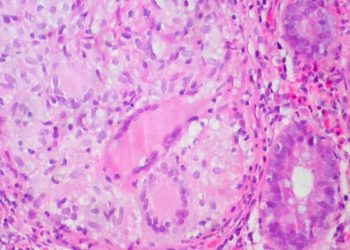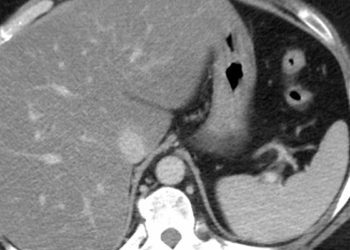Epstein-Barr viral load monitoring reduces risk of post-liver transplant lymphoproliferative disease
1. Epstein-Barr viral load monitoring was associated with reduced post-liver transplant lymphoproliferative disease in adults.
2. Epstein-Barr viral load monitoring was associated with fewer post-liver transplant lymphoproliferative disease events for up to 15 years after surgery.
Evidence Rating Level: 1 (Excellent)
Study Rundown: Primary infection or reactivation of Epstein-Barr virus after transplant can lead to post-transplant lymphoproliferative disease (PTLD). The estimated cumulative incidence of PTLD after a liver transplant is around 2.9% in adults. Epstein–Barr virus viral load is associated with PTLD and symptomatic Epstein-Barr virus, although most cases remain asymptomatic. Recently it has been shown that a monitoring strategy of repeated Epstein–Barr virus viral load measurement with reduction of immunosuppression for a detectable load after pediatric liver transplant led to lower cumulative incidences of PTLD. However, there is a gap in knowledge as to understanding the value of an Epstein-Barr viral load monitoring strategy with immunosuppression reduction after liver transplant in adult recipients. Overall, this study demonstrated that an Epstein-Barr viral load monitoring strategy with immunosuppression reduction might reduce the incidence of PTLD in adult patients with long-term immunosuppression and may contribute to tumor surveillance and prevention of other infections. This study was limited by being retrospective, having low statistical power, and having an incompletely balanced group. Nevertheless, these study’s findings are significant, as they demonstrate that monitoring Epstein–Barr virus viral load can reduce PTLD incidence after liver transplant in adults.
Click to read the study in AIM
Relevant Reading: Chronic Hepatitis B and C Virus Infection and Risk for Non-Hodgkin Lymphoma in HIV-Infected Patients
In-Depth [retrospective cohort study]: This retrospective cohort study included all deceased donors with their first orthotopic liver transplant from two liver transplant centers in Leiden and Rotterdam in the Netherlands. Patients with an auxiliary liver transplant or a follow-up time of fewer than two weeks were excluded. The primary outcome measured was the cumulative incidence of PTLD, corrected for possible confounders. The secondary outcomes analyzed were detectable Epstein-Barr viral load, reduction in immunosuppression based on detectable Epstein-Barr viral load, transplant rejection, death, and graft loss (retransplant or death). Outcomes in the primary analysis were assessed via propensity scores estimated by logistic regression with all relevant baseline variables included. Based on the primary analysis, after the inverse probability of treatment weighting of the four groups to achieve a balance among the groups for important patient characteristics, differences within hospitals between the historical and recent era in cumulative incidences—expressed as the number of events per 1000 patients measured at 5-, 10-, and 15-year follow-up—showed fewer events in the contemporary era in both centers. This difference was considerably larger in the monitoring center. The difference-in-difference analysis showed a larger within-hospital decrease in PTLD in the hospital with Epstein-Barr viral load monitoring strategies in place, as compared to the hospital group without Epstein-Barr viral load monitoring. Overall, this study demonstrated that Epstein-Barr viral load may reduce PTLD incidence after liver transplant in adults.
Image: PD
©2023 2 Minute Medicine, Inc. All rights reserved. No works may be reproduced without expressed written consent from 2 Minute Medicine, Inc. Inquire about licensing here. No article should be construed as medical advice and is not intended as such by the authors or by 2 Minute Medicine, Inc.







